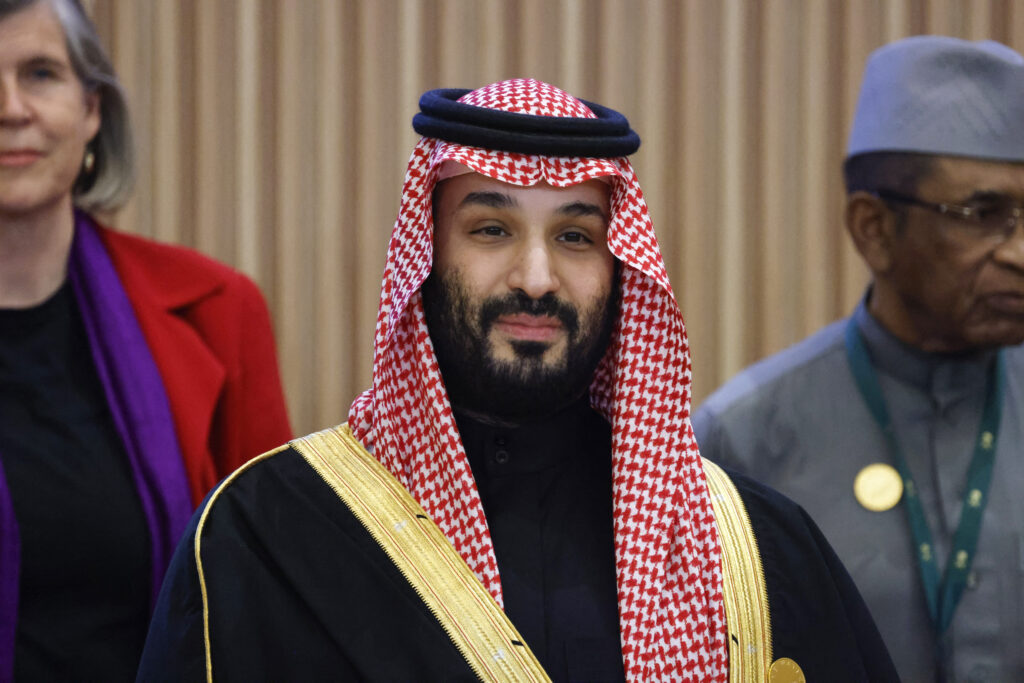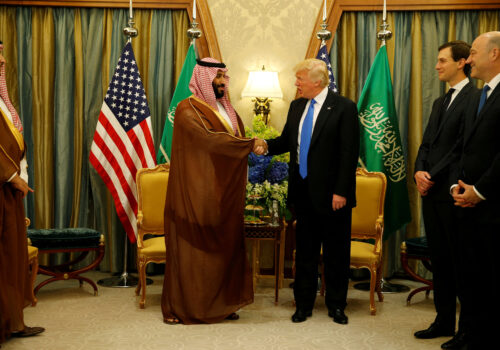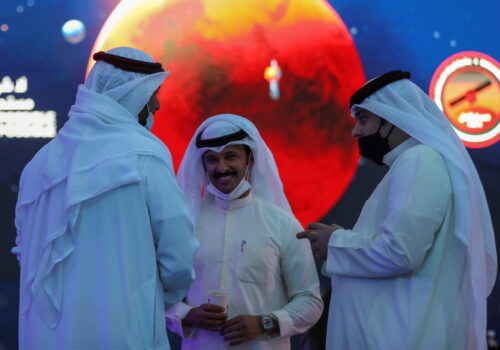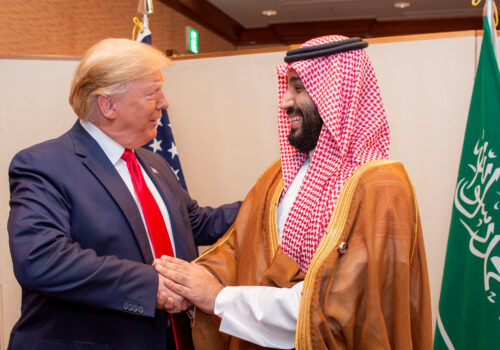US President Donald Trump will embark on a high-profile visit to the Gulf on May 13—his first major foreign trip since returning to the Oval Office. The itinerary includes stops in Saudi Arabia, the United Arab Emirates (UAE), and Qatar. In Riyadh, Trump will attend a summit of Gulf Cooperation Council (GCC) leaders hosted by Saudi Crown Prince Mohammed bin Salman. Trump’s choice of destinations signals a renewed focus on the oil-rich Gulf and its geopolitical clout. With global markets in flux and tensions running high, Trump is expected to pursue initiatives in energy, security, and economic cooperation that could reshape the United States’ engagement in the Middle East.
The welcome in Riyadh will be more than ceremonial: Saudi Arabia is the linchpin of Trump’s Gulf tour. On May 14, Trump will join heads of all six GCC states at a summit in the Saudi capital. From Riyadh, Trump will head to Doha for talks with Qatari Emir Tamim bin Hamad Al Thani, then to Abu Dhabi to meet UAE President Mohammed bin Zayed Al Nahyan.
But Trump’s Gulf visit is more than a diplomatic tour; it is a pivotal opportunity to reimagine US–Gulf relations for a new era. The region is no longer content to be seen as the world’s energy hub alone; its ambitions now span digital innovation, green growth, and global influence. To remain a trusted and valuable partner, the United States must evolve its engagement strategy—offering not only promises but a visionary blueprint for shared prosperity and long-term stability.
Energy diplomacy: Oil on the table
Oil production will feature prominently in Trump’s talks, as energy prices tie directly into both global economics and domestic politics. Trump has drawn a link between high inflation in the United States and expensive oil, vowing to ask Saudi Arabia and the Organization of Petroleum Exporting Countries (OPEC) to “bring down the cost of oil.” Oil producers seemed to be trying to pre-empt such a request with this week’s announcement of another production increase, which caused oil prices to drop. Will this be enough for Trump? He will need to balance the US desire for affordable fuel with respect for Saudi economic goals, including ambitious domestic projects funded by higher oil prices. Any public statements on oil will be closely watched for signs of compromise. Energy talks may even address renewables and climate adaptation, a newly important topic for Gulf states.
Confronting regional conflicts
The Middle East’s simmering conflicts form a tense backdrop to the visit. Containing Iran’s nuclear ambitions will be a top priority. Trump’s visit comes as Washington tries to develop a new nuclear deal with Tehran, a move quietly backed by Saudi Arabia and the UAE. Gulf leaders will seek reassurance that this outreach won’t compromise their security. Another pressing issue is Gaza. Trump pointedly is not visiting Israel—a sign that without progress toward a Gaza cease-fire or hostage deal, such a stop would yield little. Instead, Qatar and Egypt continue to work on brokering a cease-fire and easing the humanitarian crisis.
Yemen’s war, where a fragile cease-fire now offers hope, will also come up—Trump can reinforce Gulf-led peace efforts by lending US support. From Yemen’s tentative peace to Syria’s uncertain future, Gulf partners are bearing more responsibility for regional crises, and US backing can help them succeed. Each of these challenges underscores the importance of US-Gulf cooperation in resolving conflicts, as Washington and its Gulf allies strive to coordinate strategies and realign on the responsibilities of peace-making.
Investment and economic opportunities
Economic statecraft is at the heart of Trump’s Gulf agenda. The region’s deep pockets and sovereign wealth are a magnet for a US president eager to spur investment and job growth back home. Trump will seek major new investments from Saudi Arabia, Qatar, and the UAE into US infrastructure, energy, and technology ventures. In this transactional diplomacy, big numbers matter—and reports suggest that Trump is hoping to secure additional investment deals. Visible Gulf capital flows would allow Trump to claim wins for the US economy.
Beyond oil and real estate, today’s focus includes emerging industries. Cooperation in artificial intelligence and advanced technology is on the agenda, aligning with Gulf states’ ambitions to become tech hubs. Expect announcements of joint tech funds or research centers. Defense deals are another pillar of the economic relationship. On the eve of the trip, the United States approved a $3.5 billion sale of advanced air-to-air missiles to Saudi Arabia, a signal that security cooperation (and the hefty contracts that come with it) will feature alongside business deals. By the end of the tour, Trump will aim to unveil a slate of agreements projecting a narrative that US-Gulf ties are translating into tangible economic benefits.
Despite headline-grabbing Gulf pledges, the numbers tell a cautionary tale. The UAE’s vaunted ten-year, $1.4 trillion investment commitment is enormous. However, this commitment lacks any clear roadmap, and such long-term promises face serious headwinds amid global economic volatility. Similarly, Saudi Arabia’s promised $600 billion (over four years) investment push represents an implausibly high share of the country’s economy. Riyadh’s finances are already stretched by Vision 2030 mega-projects like the city of NEOM, forcing the government to recalibrate and prioritize domestic spending. With the kingdom contending with turbulent growth forecasts and persistent political strains (not least the fallout from the war in Gaza), a sustained influx of Saudi capital into the United States is increasingly in doubt.
Recalibrating bilateral relationships
Each stop on the trip reflects a recalibration of US ties with a pivotal Gulf partner. In Saudi Arabia, Trump will renew official ties with Crown Prince Mohammed bin Salman after having kept his relationship with Riyadh strong during his time out of office. A similarly reassuring tone is expected in Abu Dhabi, where the UAE’s leaders seek confirmation of enduring US support even as they hedge with other partners. The stop in Doha highlights Qatar’s importance as a US ally, host to a major airbase and a mediator in regional crises. Broader strategic issues will weave through these bilateral talks. With China and Russia also courting the region, Trump’s visit is a chance to reassert US influence amid shifting alliances.
As Trump prepares for his high-stakes visit to the Gulf, it is essential that his administration makes the most of this opportunity. Beyond familiar conversations about oil and security, this visit can—and should—mark the beginning of a broader, smarter partnership. Here are four ways Trump and his team can seize the moment.
- Stabilize energy markets, embrace climate adaptation: Trump will ask Gulf producers to help moderate oil output to keep global prices in check. Yet to make this more than a one-note exchange, Trump should propose joint US–Gulf initiatives focused on clean energy transitions and climate resilience. By supporting Gulf investments in hydrogen, carbon capture, and renewable energy, the United States can demonstrate that its energy ties are evolving with the times—making both economies more resilient and forward-looking.
- Prioritize conflict mediation: Washington’s long-standing alliances in the Gulf are grounded in shared security interests. Trump should leverage the considerable trust he enjoys with Gulf leaders to press for meaningful progress in Yemen’s fragile peace process and the war in Gaza. A joint US–Gulf conflict resolution framework could institutionalize cooperation, ensuring both swift responses to flare-ups and sustained support for reconstruction and peacebuilding, helping to stabilize a region too often trapped in cycles of crisis.
- Bolster economic ties through innovation: Trump’s transactional approach to diplomacy is well known, but this trip offers a chance to push economic ties into new, forward-looking areas. Encouraging Gulf sovereign wealth funds to channel investments into US infrastructure and tech startups would deliver immediate economic benefits. Yet deeper gains lie in establishing joint research ventures in artificial intelligence, cybersecurity, and next-generation industries. This form of digital diplomacy could position both sides as global innovation leaders, fostering a tech-driven alliance for the twenty-first century.
- Strengthen cultural bridges: To humanize what is often seen as a transactional relationship, the United States should double down on cultural diplomacy. Arts collaborations, sports exchanges, and interfaith dialogues can soften perceptions and deepen trust between societies. By championing such initiatives, Trump can underscore that US–Gulf ties are not confined to boardrooms and defense pacts but extend into the everyday fabric of life. Nurturing people-to-people connections is as strategic as any formal agreement.
If Trump can look beyond the predictable and embrace a more diversified, future-oriented approach—one that ties oil and security to innovation, youth, and culture—he can transform this trip from a standard diplomatic handshake into a legacy-defining pivot. The sands of the Gulf are shifting fast. To stay grounded, the United States must not just renew its ties—but reinvent them for the decades ahead.
Racha Helwa is the director of the empowerME Initiative at the Atlantic Council’s Rafik Hariri Center for the Middle East.
Further reading
Sat, Apr 26, 2025
In a normalization agreement with Israel, Saudi Arabia should settle for nothing less than Palestinian statehood
New Atlanticist By Amir Asmar
Saudi Arabia should make full Palestinian statehood part of the asking price for normalizing relations with Israel.
Fri, Apr 25, 2025
Geopolitics in orbit: What Gulf moonshots mean for Washington
MENASource By
On a multipolar world stage with Russia and China power competition, it’s clear that space collaboration has all-too-earthly impacts.
Thu, Mar 27, 2025
A US-Saudi deal without Israel? Here’s what the US should ask for.
New Atlanticist By Kirsten Fontenrose
Trump could deliver a stronger security agreement with Saudi Arabia that includes the hefty asks from the kingdom without normalization with Israel. But should he?
Image: Saudi Arabia's Crown Prince Mohammed Bin Salman looks on during a group photo together with other heads of state participating in the One Water Summit in the capital Riyadh on December 3, 2024. Photo by Ludovic Marin/Pool/ABACAPRESS.COM




